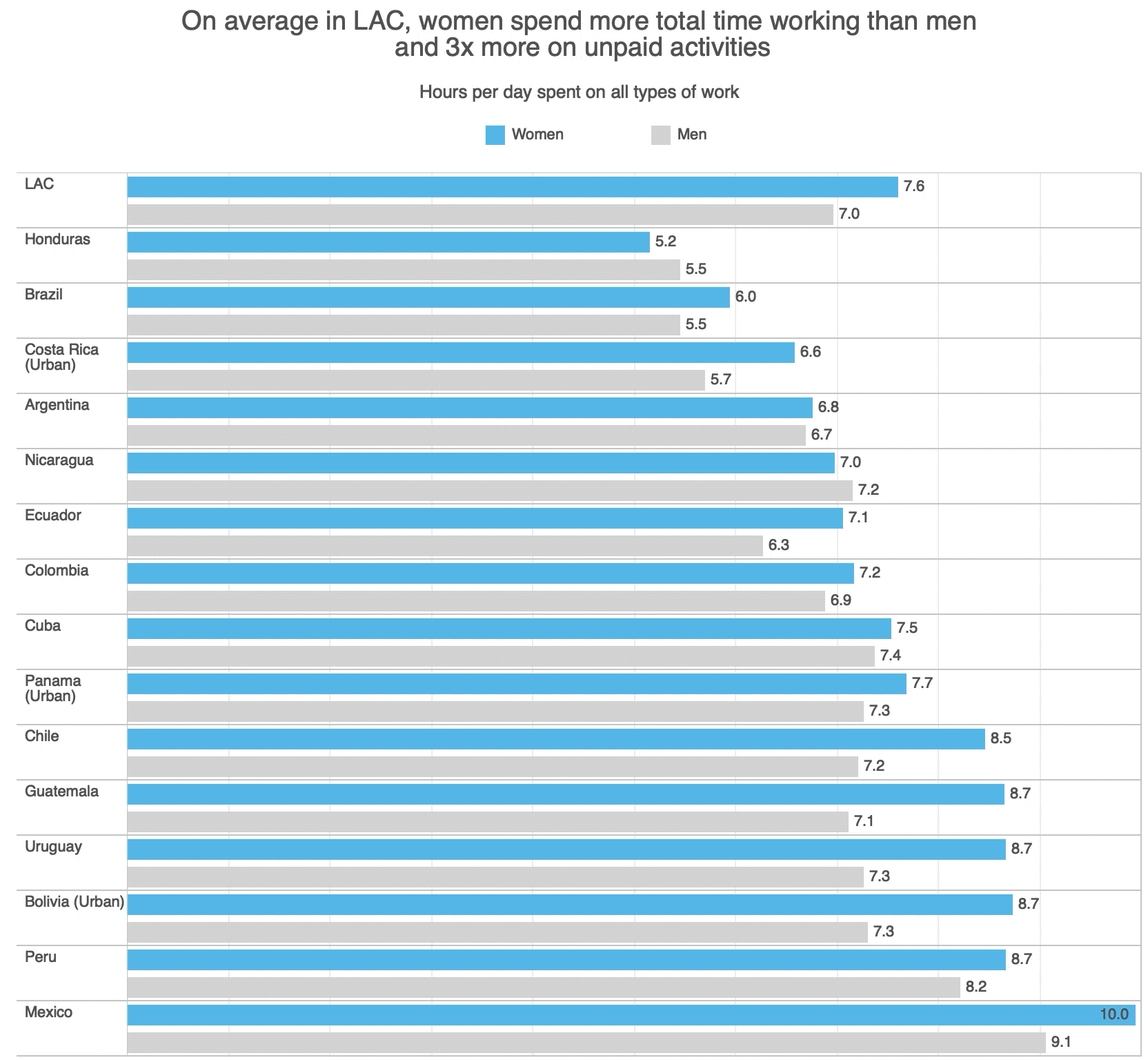Hidden figures: The need for better data and evidence to improve gender policies
March 8, 2019
The 2016 movie “Hidden Figures” depicts the story of three NASA mathematicians whose work is disregarded for being African American women, portraying how prejudices undermine their contribution to society. In honor of International Women’s Day, this #GraphForThought aims to provide a quick glance at some facts that describe the reality of working women in LAC countries, and a few policies that have been carried out to facilitate their entrance into the labor market. Many challenges remain.

While there is heterogeneity between countries, perhaps the most striking fact about gender and employment in LAC is that about half of women are not in the labour force. In some countries, female labour force participation rate* is actually as low as forty percent. While women have caught up with men in terms of educational attainment, they have not entered the labour market as much as their equally educated male peers.
This is problematic for a number of reasons. For one, normatively, it is unfair that women face lower economic opportunities compared to their male counterparts. Also, it means that the social and economic returns from the investment in the education of women are not being realized.
The questions are why, and what can we do about it?**
A commonly cited reason for low female labour force participation is that women disproportionately assume the responsibilities of caring for others and unpaid domestic work. These responsibilities represent an important time constraint, particularly for women that cannot afford to outsource at least some of the tasks associated with these roles. The figure below shows the total time women and men spend in paid versus unpaid work in a sample of LAC countries: for every hour that men spend in unpaid work, women spend three hours.

To lift this time constraint, some governments in the region have improved access to childcare services. For example, in 2015 Uruguay implemented a Comprehensive National Care System (SNIC), a co-responsibility model of care among families, the State, the community and the market. Costa Rica created the National Child Care Development Network (Redcudi) to establish universal child care and development systems that coordinate the public and private provision of services. While these kinds of policies have led to positive increases in female LFPR in general, the magnitude of the results vary substantially across LAC countries. A recent IADB publication found that depending on the country, the provision of childcare increased the probability of mothers being employed by 2-22%. It is important to note, however, that childcare policies are not necessarily enough, since there are other constraints and barriers for women entering the labour force. Much less attention has been paid by policy makers to issues such as the care of older people and people with disabilities, as well as constraints related to social norms around gender roles; issues that are trickier and perhaps harder to address.
There is some evidence that supports the idea that women are less likely to participate in the labour market if their male partners exhibits negative cultural attitudes towards such behavior (Antecol, 2003). Using data from Chile, Contreras and Plaza (2010) shows that the more women have internalized machista and conservative cultural values, understood as traditional attitudes toward gender roles, the less likely they are to participate in the labor market.
Whilst the context may vary from country to country, policy interventions to boost female LFPR need to take into consideration gender neutral practices as well as social norms. If these are not considered, well intentioned policies can prove to be ineffective. For example, parental leave was extended to men in Chile in an effort, among other things, to prevent discrimination from firms towards employing women. However, since the implementation of the parental policy in 2011, only 1157 fathers have used the benefit (0.24%), leaving hiring incentives structures at the firm level intact.
We still have a long way to go in LAC in order to close the existing gaps between women and men in labour markets. Although well oriented policies help close these gaps, deep and often hidden forces within households and societies still prevents women from fully putting their capabilities to work. As Target 5.4 of the Sustainable Development Goals (SDG) highlights, in order to pave the road toward gender equality we need to “recognize and value unpaid care and domestic work through the provision of public services, infrastructure and social protection policies and the promotion of shared responsibility within the household and the family as nationally appropriate.”
*Formally, the labor force participation rate corresponds to the share of the working age population willing to engage in market production, which is 50% for women in LAC.
** For a comprehensive study on this topic please see Mateo-Berganza and Rodríguez Chamussy, (2016), “Cashing in on Education: Women, Childcare and Prosperity in Latin America and the Caribbean”

 Locations
Locations